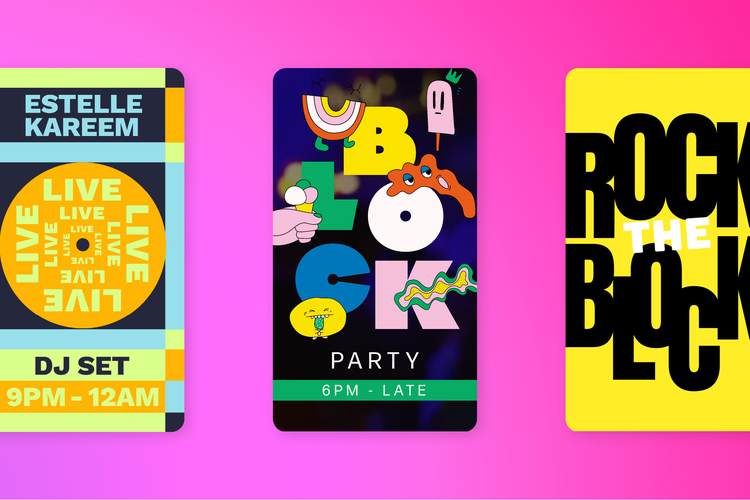What is video marketing?
Video marketing is a marketing strategy that uses video content to promote products, services, or the brand. Video marketing harnesses the power of videos to engage with audiences and convey messages in a dynamic and visually appealing way, with the end goal of driving brand awareness, lead generation, and sales.
Video marketing is often executed through social media, websites, webinars, and email campaigns while encompassing an extensive range of video types that we will dive into later in this article. Video marketing goes beyond standard video ads – it includes all kinds of brand videos, from livestreams to testimonials. In 2025, video content is one of the best ways to create impactful marketing campaigns that increase customer engagement and retention.
Why is video marketing important?
If you aren’t using video content as a part of your social media marketing strategy, now is the time to start. Here are some benefits of incorporating video into your digital marketing strategy.
Increased engagement
Videos are an effective way to connect with existing and new consumers alike. This type of marketing campaign is more engaging than alternatives like still photos, making it easier to engage people with your content.
Research suggests that short video content is a great way to incite an emotional response from people, which is the first step to getting them to engage. Short videos can also hold people’s attention, encouraging them to dwell on a site.
Improved SEO rankings
By encouraging people to remain on your website’s landing pages for longer, videos can also help improve your platforms’ search engine optimization (SEO) rank. This makes it more likely that search engines like Google will show people your content when they search.
Online videos also get picked up by popular search engines like Google. Additionally, video-centric platforms like YouTube are increasingly functioning as search tools themselves. YouTube isn’t just a social network; people also use it to look up information.
Higher conversion rates
By encouraging consumers to engage and interact, video can also help convert viewers into customers. Increased conversion rates mean more customers and more money coming into your business.
Many videos end with a call to action (CTA). This can be a short, simple, and clear message like “Click Here” or “Buy Now.” The CTA at the video’s conclusion encourages the viewer to act and can convert them into a customer.
Enhanced brand recognition
Video content is a great way to help craft a strong brand. Your “brand” refers to the unique way people view your business. The power of video to engage with people and incite emotional reactions makes it especially useful for branding.
A brand is what sets your business apart from other companies that sell similar products or services. Crafting a strong brand can help you stand out and boost sales.
Improved user experience
Video is an easy-to-digest way for consumers to receive information. They don’t have to read long walls of text — they can instead sit back, watch, and listen. This makes for a more seamless customer experience with zero hassle.
Certain types of videos, like tutorials and explainers, can significantly benefit consumers. For example, a product explainer video can highlight key features of a product and explain how they work.
Types of videos for marketing
Another great thing about video is how versatile it is. Content marketers can use many types of videos to suit all kinds of purposes. Here’s a quick overview:
- Explainer videos. Explainer videos are educational tools. They use actionable, instructional information to explain points of interest or product features to the consumer. Explainer or educational videos are a great way to establish credibility with consumers, as they provide valuable information instead of just selling.
- Product demos. Demo videos provide a detailed explanation of how a specific product works. It might show a person using the product in real-time, clearly showing consumers its features and functionality. Product videos help boost your brand and build trust in your business.
- Customer testimonials. Testimonial videos feature real-world consumers who have used a product or service. These individuals share their experiences, (hopefully) inspiring other consumers to try the product or service for themselves. Testimonials are a great tool to showcase a case study or build credibility and trust by providing social proof of the product or service’s value.
- How-to videos. How-to videos show (surprise, surprise) how to do something. You can find how-to videos for anything and everything, from how to do certain makeup and hair techniques to DIY renovation tutorials. How-to videos can help build consumer trust and establish your brand as an expert.
- Livestreaming. Most video marketing content is pre-recorded and edited. However, you can also livestream a video in real-time via Instagram, YouTube, or TikTok. Live videos can be a great way to engage directly with people and expand your brand's reach.
- Event videos. These videos aim to capture key moments or highlights from events, conferences, or other special occasions hosted or attended by the company. Event brand videos are excellent for providing a behind-the-scenes view into company culture, which helps to connect with the audience on a more personal level. As a bonus, they can also attract attention from those who could not attend the event, generating interest in future events.
- Interviews. Interview videos can feature discussions with industry experts, key figures within the company, influencers, and more. Interview videos are a great way to establish authority and credibility, provide valuable insights, and humanize a brand.
- Animated videos. This type of online video content uses illustrations, graphics, or animations to convey a message or story. Animated videos are a visually appealing way to simplify complex concepts and can be used for various purposes — think explaining products or services, creating entertaining content, or demonstrating processes.
- User-Generated Content (UGC). UGC involves content created by users, like reviews, testimonials, or product usage videos. UGC is a particularly powerful tool for conveying authenticity and credibility. Encouraging real customers to share their experiences creates highly relatable content that can influence potential customers.
How to make quality video marketing content
Nobody wants to watch grainy, shaky, or otherwise poorly made video content. Luckily, Adobe Express simplifies the video creation process. Here’s how to build out a video strategy and make successful videos for marketing purposes:
1. Define your objectives and audience
Defining your objectives is the first step to creating high-quality video marketing content. To do this, you first need to understand your overall business goals. Whether it’s increasing brand awareness, driving sales, or educating your audience, your video content should contribute to your broader business objectives.
Next, identify your target audience. Understanding your target audience is crucial when creating high-quality video content because it allows you to tailor your messages to your audience’s specific preferences and needs. The only way to ensure your videos resonate with your audience is to deeply understand them. Consider creating a buyer persona to represent your ideal customer. Analyze customer data and conduct market research to understand your target audience’s demographics, interests, behaviors, and pain points.
Once you have defined your objectives and target audience, set specific measurable goals and define key performance indicators (KPIs). Identify key metrics that will indicate the success of your video marketing efforts, such as video views, engagement, click-through rates, or conversions.
2. Develop a video marketing strategy
Based on your goals and audience insights, create a video marketing strategy that aligns with your brand. Consider the type of content, frequency, and video platforms you’ll use. Pinpoint the social media channels you’ll use to promote your video content and whether you are creating content primarily for desktop or mobile devices. Engage in keyword research to identify relevant keywords in your industry. Understand what your audience is searching for and what topics trend well. Use the keywords you find to inform your content creation.
Identify which social media platforms your audience is the most active on and plan the distribution of your videos according to their preferences. Reels, TikToks, and YouTube Shorts are great options for short-form video content targeting audiences with shorter attention spans. In comparison, consider turning long-form video content into Facebook or YouTube videos. Pinpoint the video types that resonate the most with your audience. As mentioned above, these can include interviews, UGC, product demos, and more. Make sure to align your content with your brand’s visual and messaging guidelines to ensure cohesive branding.
Once you have a basic content strategy outlined, start brainstorming! Put your ideas onto a content calendar to hold yourself accountable and get yourself onto a regular posting schedule.
3. Plan and write a script
Now, it’s time to start the actual content creation. Choose a video content marketing idea and follow these steps:
- Outline your script. Create a structured outline that clearly highlights the key points you want to get across. Make sure to organize your content logically, ensuring a smooth flow throughout.
- Keep it conversational. Once you have completed your outline, make sure that you write your script in a conversational tone. Avoid overly technical language or jargon. Review and edit your script for clarity and conciseness by removing unnecessary words or repetitions.
- Hook your audience. Capture your audience’s attention from the beginning by using a compelling hook within the first few seconds of the video to pique interest and encourage viewers to keep watching until the end.
- Create a call to action (CTA). Determine the action you want viewers to take after they watch your video — whether it’s visiting your website, interacting with the post, subscribing, or making a purchase — and incorporate a clear and compelling CTA related to those actions within your video.
- Incorporate visual direction. Incorporate visual guidance into your script, indicating where visuals, movements, transitions, facial expressions, or graphics should appear. This will help the video team better understand the video’s intended visual elements.
- Mind your timing. Consider the ideal video length for each platform on which you plan to post your videos. Ensure that your script fits within the timeframe required to maintain viewer engagement.
- Practice and seek feedback. Practice delivering your script and refine it as needed. Share your script with colleagues and gather feedback to ensure your message effectively communicates and resonates with the intended audience.
4. Shoot and edit
Now it’s time to film. Invest in a good camera (a high-end smartphone would work here) and establish proper lighting. Use natural light whenever possible and stabilize your shots by using a tripod or other stabilization methods. Choose a clean and visually appealing background and avoid backdrops that might distract viewers from the main content. Pay attention to framing and choose angles that enhance your story.
Once you have captured your footage, use a high-quality video editing tool or video editing software to assemble your marketing video. Use color correction and other tools to enhance the visual appeal of your video. Ensure a consistent look throughout your video by adjusting colors, contrast, and brightness, and use transitions as required.
Consider including closed captions in your video to make it accessible to a broader audience. Additionally, closed captions allow search engines and social media platforms to crawl and index text on videos, which is a great way to engage in search engine optimization (SEO) through your videos.
If you plan to host your videos on social media sites, don’t underestimate the importance of high-quality thumbnails. Thumbnails are a powerful tool for attracting attention, encouraging clicks, and setting the tone for your video content. Investing some time and effort into creating compelling thumbnails can significantly impact the success of your video marketing efforts.
5. Incorporate branding elements
Incorporating branding elements into your video is crucial for establishing and reinforcing brand identity. Consider including elements such as logos, color schemes, and taglines to enhance brand recognition and differentiate your content in a crowded digital landscape. Consistent branding is essential to building a solid brand marketing strategy because it provides a cohesive and memorable experience for your viewers, allowing them to associate the video content they find with your brand.
Now that you have finished editing your video, it’s time to publish and promote. But first, make sure to optimize your video title and description for SEO. Based on your keyword research, choose highly searched relevant keywords to incorporate naturally throughout your title and description. Optimizing the titles and descriptions of your content will help your audience find your content more easily and help search engines understand your videos.
Next, publish your video content across your chosen platforms. Promote your video content on social media, your website, newsletters, and other relevant online communities. Make sure to resize your video and optimize it for each platform.
Foster engagement by encouraging comments, likes, and shares. Respond to audience feedback and comments to build a sense of community around your content. Regularly monitor your video performance to track metrics and see what performs well versus what doesn’t. The more videos you publish and promote, the more user feedback you’ll receive, and the easier it will be for you to understand what type of content resonates with your target audience the most.
Video content best practices
So far, we’ve covered how to create video content in Adobe Express. But it takes more than hitting these practical points to create content that converts. Follow these best practices to make sure your videos shine:
- Keep it short and to the point. Good video content marketing is snappy and concise. Identify the video's goal, like to educate or show off a product feature. Make sure the entire video is built toward the chosen aim.
- Use clear and concise messaging. Again, simplicity wins. Develop two to three core messages to support your video's narrative. The entire video should focus on communicating those points.
- Create a story. The best video marketing tells a tale that engages the customer. Ideally, this narrative will incite emotion. For example, a customer testimonial can present a pain point that resonates with your target audience.
- Incorporate brand elements. Ensure your video reflects your brand by including details like brand colors, fonts, and images. Adding your brand's logo is another way to make the video recognizable.
- Use high-quality visuals and audio. Any video or audio footage you use should be clear and easy to comprehend. If you don't have the tech to shoot high-quality videos, ready-made stock images are a good alternative.
- Add captions. Captions help to make your video more inclusive so that even people with hearing impairments can refer to them. Captions are also helpful if people don't want to listen to a video sound for privacy reasons. Create captions with a clear, easy-to-read font.
- Include a call to action (CTA). Every video should have a CTA that ties into the video’s goal. For example, maybe you're hoping to get the customer to visit your website. In that case, a simple CTA might be a "Click Here" link to the appropriate URL.
Stunning video content made easy
If done right, video content can help enhance brand awareness, engage consumers, and boost conversions. If you really lean into it, you can use video content to build a loyal following.
But bad video production can turn off consumers fast. Nobody wants to waste their valuable time watching grainy or shaky videos or those with useless content.
It’s easy to create videos your target audience will love when you have the right tools. With Adobe Express, you can craft video content for an array of platforms, including YouTube, X (Twitter), Instagram, LinkedIn, and TikTok, broadening your reach across multiple channels.
Best of all, your video content can be repurposed across various media, supporting a comprehensive content marketing strategy. Shoot your video, then format it for multiple channels so you can reuse it everywhere, from your blog to your Instagram account.
Try Adobe Express today






